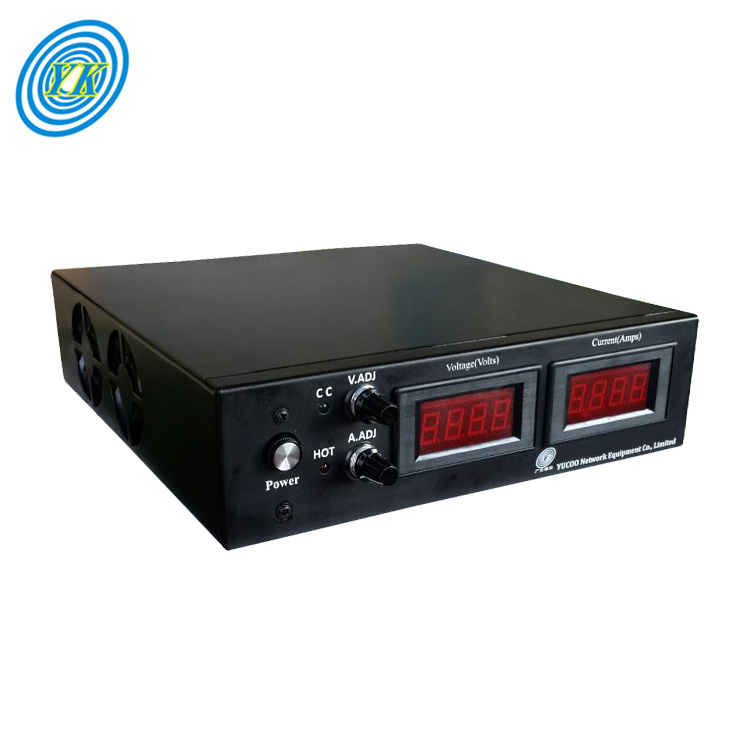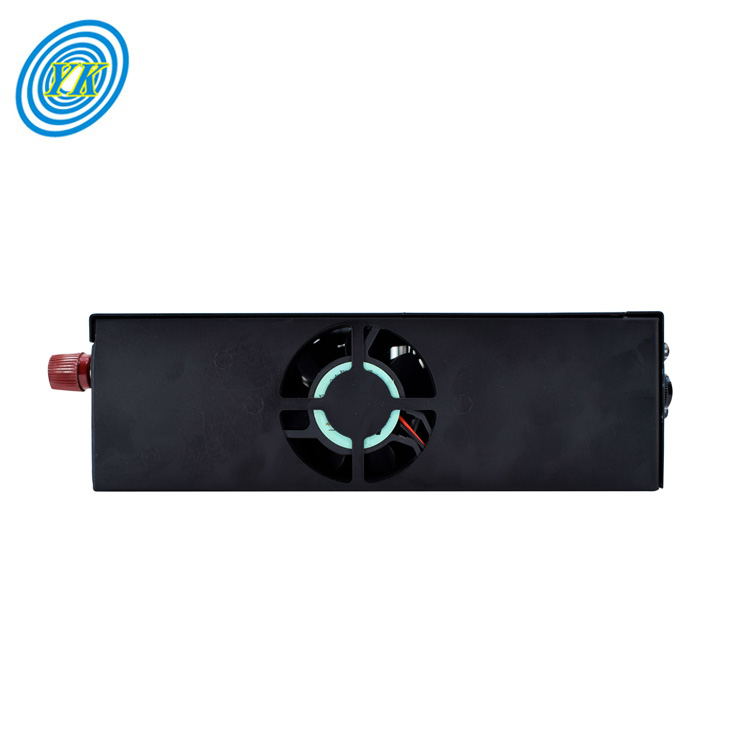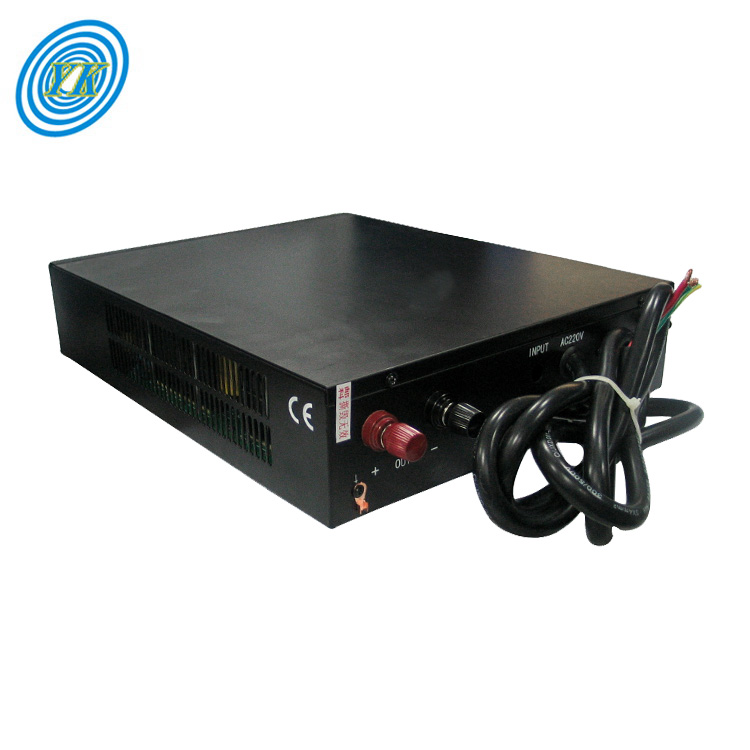News
Understanding and Utilizing Adjustable DC Power Supplies: A Comprehensive Guide
Click: 682 Date: 03/15/2024 10::21::26 AM
Understanding and Utilizing Adjustable DC Power Supplies: A Comprehensive Guide
Exploring the various types of DC power supplies, including linear and switching power supplies, and their applications across different fields such as electronics prototyping, circuit testing, and laboratory research, we delve into the intricacies of power conversion and its significance in modern technology.
Linear Power Supplies: Linear power supplies, characterized by their simplicity and reliability, are often used in applications where efficiency is not a critical factor. They operate by transforming the input voltage to the desired output voltage through a series of components, including resistors, capacitors, and inductors. This method ensures a stable output voltage but at the cost of lower efficiency compared to switching power supplies. Linear power supplies are commonly found in benchtop power supplies and battery eliminators, where their predictable performance is valued over efficiency.
Switching Power Supplies: Switching power supplies, on the other hand, are known for their high efficiency and compact size. They achieve this by using a switching system that rapidly switches the input voltage on and off, followed by a filtering system to smooth out the output. This approach allows for the conversion of high input voltages to lower output voltages, making them ideal for applications requiring high efficiency, such as in portable electronics and renewable energy systems. Switching power supplies are also preferred for their ability to regulate both voltage and current, ensuring stable operation of electronic devices.
Applications in Electronics Prototyping: In the realm of electronics prototyping, both linear and switching power supplies play crucial roles. Linear power supplies are favored for their simplicity and ease of use, making them suitable for beginners and for projects where the exact voltage level is known and stable. Switching power supplies, with their efficiency and ability to regulate voltage and current, are preferred for more complex projects requiring precise control over power levels.
Circuit Testing and Laboratory Research: For circuit testing and laboratory research, the choice between linear and switching power supplies often depends on the specific requirements of the test or experiment. Linear power supplies offer a straightforward and predictable output, making them ideal for testing circuits that require a stable voltage source. Switching power supplies, with their high efficiency and adjustable output, are preferred for testing circuits that require precise voltage and current control, such as in power electronics and renewable energy research.
Conclusion: Understanding the differences between linear and switching power supplies, and their applications in various fields, is essential for engineers and technicians. Whether the need is for a simple, reliable power source for prototyping or a high-efficiency, compact solution for complex applications, the choice of power supply can significantly impact the success of a project. By selecting the appropriate type of power supply, users can ensure that their electronic devices and circuits operate efficiently and reliably.
In the realm of DC power supplies, the foundational principles that govern their design and operation are multifaceted, encompassing a range of components and mechanisms that work together to ensure a stable and reliable power output. Here's a creative reinterpretation of these principles:
Voltage Regulation and Stability
At the heart of any DC power supply is the quest for stable voltage output. This stability is crucial for the performance of electronic devices, which can be adversely affected by fluctuations in power supply voltage. The process of maintaining a constant voltage, even under varying load conditions, is a key aspect of power supply design. This involves understanding the impact of load resistance and the use of voltage dividers to manage voltage drops effectively.
Transformers and Rectifiers: The Power Conversion Pathway
The journey from AC to DC involves several critical steps. Initially, a transformer is employed to adjust the input voltage to a level suitable for the DC circuit, offering isolation as a bonus. This is followed by the rectification process, where diodes convert the AC signal into a DC signal, effectively eliminating the negative half of the waveform. This conversion is essential for ensuring that the output is a pure DC signal, free from the oscillations of AC.
Smoothing and Stabilization Techniques
After rectification, the output signal still contains ripples, which are rapid fluctuations in voltage. To achieve a smooth and stable DC output, smoothing circuits using inductors and capacitors are employed. These components work together to filter out the ripples, providing a cleaner and more stable voltage output. Additionally, electronic stabilizers are used to further refine the output voltage, ensuring it remains constant over time.
The Role of Key Components in Regulation
Within the regulation process, several key components play pivotal roles. The control element, often a transistor, acts as a variable resistor, adjusting its resistance based on the output voltage to maintain stability. The sensing element monitors the output voltage, providing feedback to the control element to make necessary adjustments. The reference element sets the benchmark voltage against which the output voltage is compared, ensuring that the output remains within the desired range.
Design Considerations for Optimal Performance
When designing a DC power supply, it's essential to consider the specific requirements of the application, including the desired output voltage and current. This involves selecting the appropriate transformer for voltage adjustment, choosing the right rectifier for efficient AC to DC conversion, and designing the smoothing and stabilization circuits to achieve the desired output characteristics. Additionally, the power supply must be designed to handle the expected load conditions, ensuring it can provide a stable output under various operating conditions.
In summary, the design and operation of DC power supplies are underpinned by a deep understanding of voltage regulation, the conversion process from AC to DC, the role of key components in maintaining output stability, and the consideration of design parameters to ensure optimal performance. These principles form the bedrock of power supply technology, enabling the reliable and efficient operation of a wide range of electronic devices.
DC power supplies are equipped with a variety of safety and protection features to ensure the safety of both the power supply and the connected circuits. These features include:
Overcurrent and Overvoltage Protection: DC power supplies are designed with built-in mechanisms to protect against overcurrent and overvoltage conditions. These mechanisms can include fuses, circuit breakers, and overload protection circuits that disconnect the power supply from the circuit when the current or voltage exceeds safe levels, preventing damage to the power supply and the connected circuits.
Temperature Management: To prevent overheating, DC power supplies often include cooling mechanisms such as fans or heat sinks. These features help dissipate heat generated during operation, ensuring that the power supply operates within its safe temperature range.
Grounding and Isolation: Proper grounding and isolation are crucial for safety. Grounding helps prevent electric shock by connecting the power supply to a common ground, while isolation prevents electrical leakage between the power supply and the connected circuits.
Input and Output Protection: DC power supplies may include protection features for both the input and output sides. Input protection can include surge protection to guard against voltage spikes, while output protection can include overload and short circuit protection to prevent damage to the power supply and the connected circuits.
User Interface and Controls: The user interface of a DC power supply often includes safety features such as lockouts to prevent accidental operation and indicators to show the status of the power supply, including whether it is overloaded or under voltage.
These safety and protection features are essential for ensuring the safe and reliable operation of DC power supplies, protecting both the power supply itself and the circuits it powers.
The user interface and control options in DC power supplies are designed to provide users with a comprehensive and intuitive way to manage voltage and current settings. These interfaces range from simple front panel controls to sophisticated software solutions that offer advanced features and flexibility.
Graphical User Interface (GUI): The Adaptive Power Systems DC Power Supply Windows control software features a GUI that offers a user-friendly way to control all functions and settings. This includes setting voltage, current, and control mode directly from the main screen. The software is designed to be compatible with both Windows 7 and Windows 8.1, leveraging modern software design principles and 64-bit technology to ensure smooth operation and efficient data querying
Comprehensive Model Support: The GUI program is versatile, supporting all Adaptive Power Systems DC Power Supply models. This means that users only need one program to manage a wide range of applications, simplifying the setup and operation process
Advanced Software Design: Developed in C# on the Microsoft Visual Studio platform, the software is designed to take full advantage of advanced functions like multi-threading. This allows for the background querying of measurement data while the user interacts with the program, enhancing the overall user experience
Key Features: The software offers a range of features including the ability to control all power supply functions, retrieve, display, and store measurement data, support for all APS DC Power Supply models, and the creation, saving, editing, and execution of test scripts. It also supports USB, RS232, GPIB, and LAN interfaces, making it compatible with various operating systems and communication protocols
Built-in Simulation Mode: As a useful operator training tool, the software includes a built-in simulation mode. This feature allows users to practice and familiarize themselves with the software's functionalities without the need for a physical power supply, enhancing safety and efficiency in the learning process
In summary, the user interface and control options in DC power supplies, particularly those offered by Adaptive Power Systems, are designed to provide users with a comprehensive, flexible, and user-friendly way to manage their power supply settings. From the graphical user interface to the advanced software design and built-in simulation mode, these features ensure that users can effectively control their power supplies, regardless of their level of expertise.
In the realm of DC power supplies, the future is brimming with innovation and advancement. Here's a creative reinterpretation of the key points and future directions, reimagined for a fresh perspective:
Innovative Power Supply Designs
The evolution of power supply technology is marked by a shift towards more compact and efficient designs. This trend is driven by the need for power supplies that can fit seamlessly into smaller devices, such as wearables, without compromising performance or efficiency. The integration of advanced technologies like Gallium Nitride (GaN) is paving the way for power supplies that are not only more efficient but also capable of operating at higher frequencies, enabling faster response times and reducing electromagnetic interference.
Digital Control and Programmability
The integration of digital control into power supplies is revolutionizing how we manage and utilize power. By leveraging digital signal processing techniques, power supplies can achieve more precise control over voltage and current waveforms, leading to improved efficiency and performance. This also opens up new possibilities for programmability, allowing power supplies to adapt dynamically to changing load conditions, making them more versatile and future-proof.
Sustainability and Renewable Energy Integration
As the world moves towards cleaner energy sources, the demand for power supplies that can efficiently convert and regulate power from renewable sources is growing. This trend is particularly significant in the context of sustainability and renewable energy, as power supplies play a crucial role in enabling the widespread adoption of renewable energy systems. The future of power supplies is likely to see a greater emphasis on sustainability, with advancements in wide-bandgap semiconductors, smart features, and digital control algorithms driving innovation in this area.
High-Power Density and Miniaturization
The demand for compact and high-power density power supplies is on the rise, driven by the need for power supplies that can meet the requirements of space-constrained applications. This trend is particularly evident in industries such as wearables, where size and weight considerations are paramount. The development of modular and scalable power supply architectures allows for easy customization, expansion, and reconfiguration to adapt to changing system requirements and applications.
Advancements in Efficiency and Reliability
The efficiency of AC/DC switching power supplies is largely due to their ability to rapidly switch the input voltage on and off, employing high-frequency switching to achieve much higher efficiency compared to linear power supplies. The use of switching power supplies minimizes heat dissipation, reducing the need for complex cooling systems. Furthermore, advancements in digital control algorithms will continue to enhance the performance and reliability of switching power supplies, ensuring optimal power delivery and prolonging the lifespan of devices.

